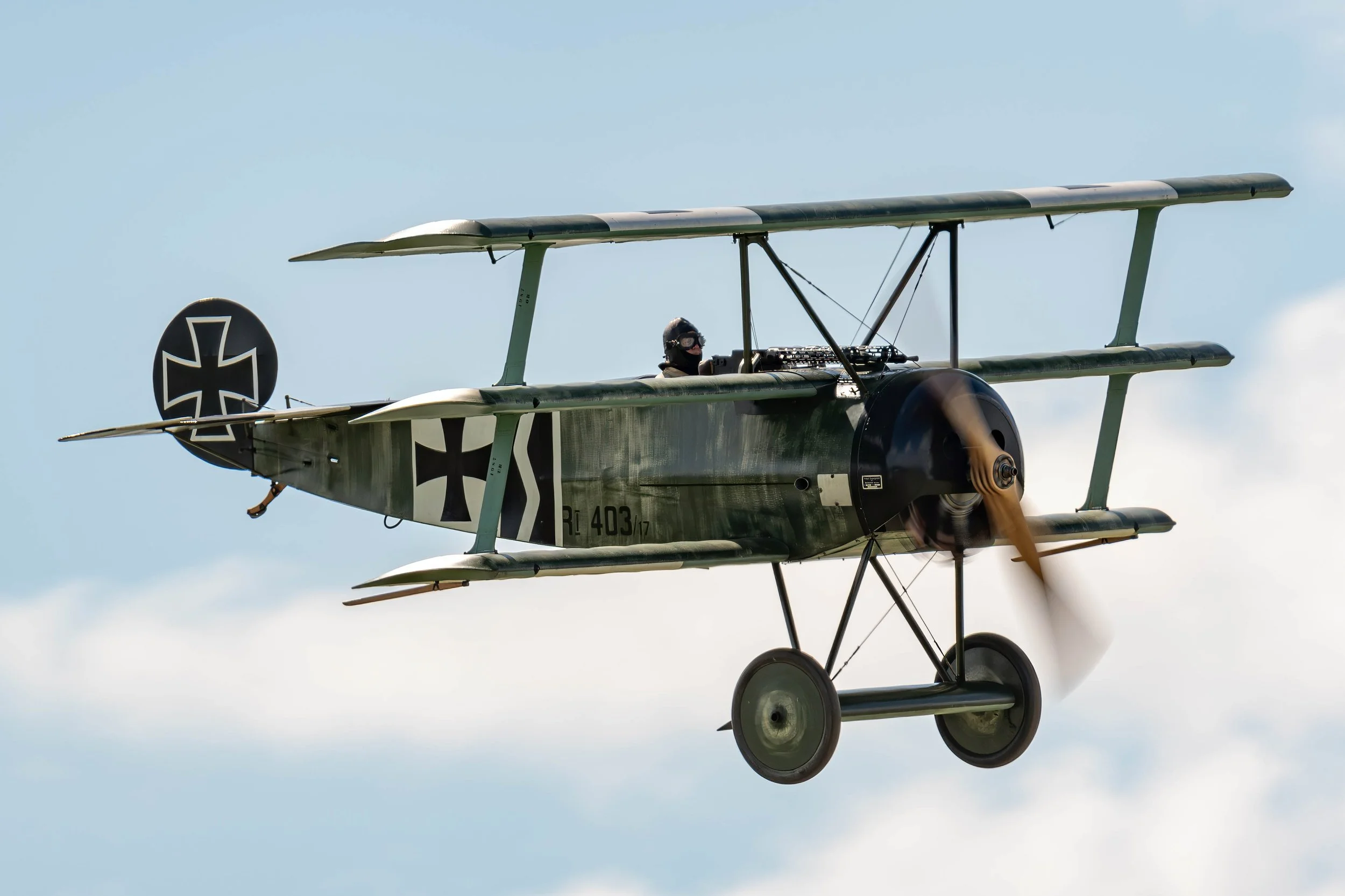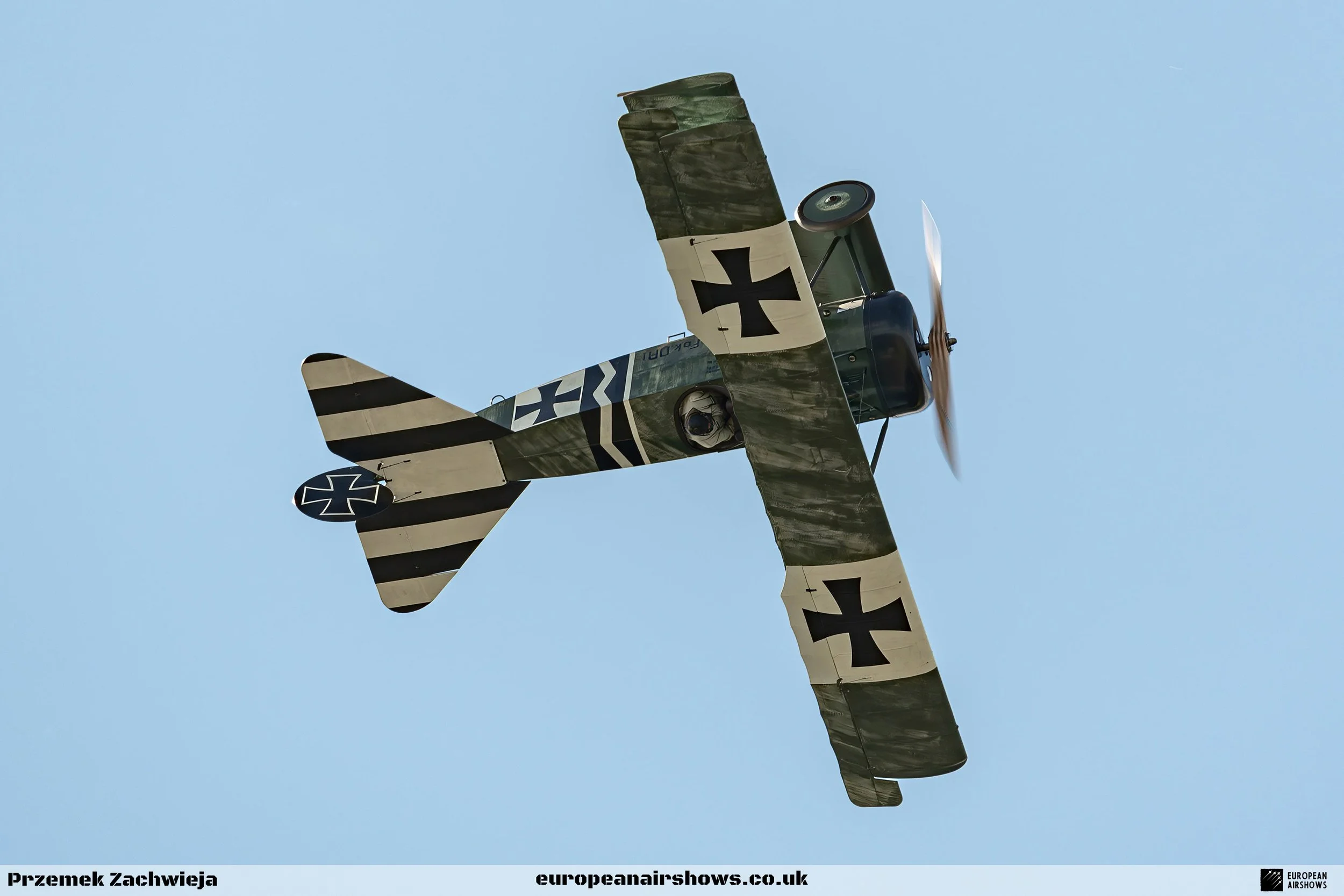
July 5 / Fokker Dr.I first flight
First Flight 5 July 1917
Fokker Dr.I
The Fokker Dr.I, often referred to as the Fokker Triplane, holds a storied place in the annals of aviation history, particularly for its iconic role during World War I. This aircraft is indelibly linked with the image of the “Flying Circus” and the legendary Red Baron, Manfred von Richthofen. The Dr.I’s development, operational history, and enduring legacy offer a fascinating glimpse into the evolution of aerial combat during the early 20th century.
The genesis of the Fokker Dr.I can be traced back to the intense aerial combat that characterized the Western Front during World War I. By 1917, the Allies had introduced several formidable aircraft, such as the Sopwith Triplane, which demonstrated superior manoeuvrability and climb rate. In response, the German Luftstreitkräfte (Air Force) sought to develop a comparable, if not superior, fighter. Anthony Fokker, a Dutch aviation pioneer and head of Fokker Flugzeugwerke, took on the challenge.
The design of the Dr.I was heavily influenced by the Sopwith Triplane. Reinhold Platz, Fokker’s chief designer, opted for a triplane configuration to maximize lift and agility. The aircraft featured three narrow-chord wings stacked one above the other, which provided exceptional manoeuvrability and a rapid climb rate. The Dr.I was powered by a rotary engine, initially the Oberursel UR.II, which was a copy of the French Le Rhône 9J. This engine, although not the most powerful, was relatively reliable and contributed to the aircraft’s nimbleness.
The Fokker Dr.I made its debut in combat in September 1917. Early models, however, faced structural issues, particularly with the upper wing, which led to several fatal crashes. In response, Fokker implemented design modifications to strengthen the wings. Despite these initial setbacks, the Dr.I quickly proved its worth in the hands of skilled pilots. Its agility allowed it to outmanoeuvre most Allied aircraft, making it a formidable opponent in dogfights.
The aircraft’s most famous pilot, Manfred von Richthofen, also known as the Red Baron, significantly contributed to the Dr.I’s legendary status. Richthofen, already a celebrated ace, achieved many of his later victories flying the distinctive red-painted Dr. I. His exploits, along with those of other aces like Werner Voss and Ernst Udet, cemented the Triplane’s reputation. The Dr.I became an emblem of German aerial prowess and an object of fascination and fear among Allied pilots.
However, the Dr.I was not without its limitations. Its rotary engine, while providing excellent manoeuvrability, also imposed constraints on speed and operational ceiling. Furthermore, the aircraft’s wooden structure and fabric covering made it vulnerable to damage. By mid-1918, technological advancements had rendered the triplane design somewhat obsolete. Newer biplanes, such as the Fokker D.VII, which offered better performance and durability, began to replace the Dr.I in frontline service.
Despite its relatively short operational lifespan, the Fokker Dr.I’s impact on aerial combat and its place in aviation history are undeniable. The aircraft’s design and performance characteristics influenced subsequent fighter development, and its association with the Red Baron ensured its place in popular culture. Today, the Dr.I is remembered as an icon of World War I aviation, celebrated in museums, airshows, and historical reenactments around the world.
The Fokker Dr.I was a product of necessity and innovation, born out of the fierce aerial battles of World War I. Its unique design, coupled with the prowess of its pilots, made it a formidable adversary in the skies. While its operational life was brief, the Dr.I left an indelible mark on the history of military aviation, symbolizing the bravery and ingenuity of the early aviators who flew it.
Fokker Dr. I Facts
Influence of the Sopwith Triplane: While it is widely known that the Dr.I was influenced by the Sopwith Triplane, the extent of this influence is often understated. The German High Command was so impressed by the Sopwith Triplane’s performance that they captured one and sent it to Fokker for detailed study. This direct examination significantly shaped the design of the Dr.I.
Limited Production Numbers: Contrary to popular belief, the Fokker Dr.I was not produced in large numbers. Only about 320 units were built. This is relatively small compared to other aircraft of the era, such as the Albatros series, which saw production numbers in the thousands.
Early Structural Failures: The Dr.I’s early service was marred by structural issues, particularly with the upper wing. These problems were so severe that the aircraft was temporarily grounded in October 1917. It wasn’t until Fokker reinforced the wings that the aircraft was deemed safe for operational use again.
Engine Variants: While the Oberursel UR.II rotary engine was the standard powerplant, some Dr.I units were fitted with different engines. For instance, a few were equipped with the more powerful Goebel Goe.II engine, although these variants were not widely used.
Ammunition Load: The Dr.I was armed with two synchronized LMG 08/15 Spandau machine guns. However, what is less known is that the aircraft carried a relatively limited amount of ammunition—typically around 500 rounds per gun. This necessitated careful fire discipline during combat.
Richthofen’s Dislike of the Dr.I: Despite his association with the Dr.I, Manfred von Richthofen was not particularly fond of the aircraft. He found it to be slower and less powerful than other fighters. However, he appreciated its manoeuvrability, which suited his aggressive flying style.
Innovative Control Surfaces: The Dr.I featured innovative control surfaces for its time. The ailerons, for example, were designed to provide better roll control, which was crucial for the aircraft’s famed manoeuvrability. This design was a departure from earlier Fokker models, which had suffered from poor lateral control.
Combat Record: While the Dr.I is often celebrated for its combat prowess, its actual combat record is mixed. It achieved significant success in the hands of skilled pilots, but it also had a high attrition rate due to its structural vulnerabilities and the evolving tactics and technology of aerial warfare.
Short Operational Span: The Dr.I had a relatively short operational lifespan. It was introduced in late 1917 and began to be phased out by mid-1918 as newer, more advanced aircraft like the Fokker D.VII came into service. This short span was due to rapid advancements in aviation technology during the war.
Legacy in Modern Aviation: The Fokker Dr.I’s influence extends into modern aviation. Its triplane design has inspired numerous replica builds and has featured prominently in airshows and historical reenactments. Additionally, its design principles have been studied by aviation historians and engineers, contributing to the broader understanding of early 20th-century aircraft design and aerodynamics.









